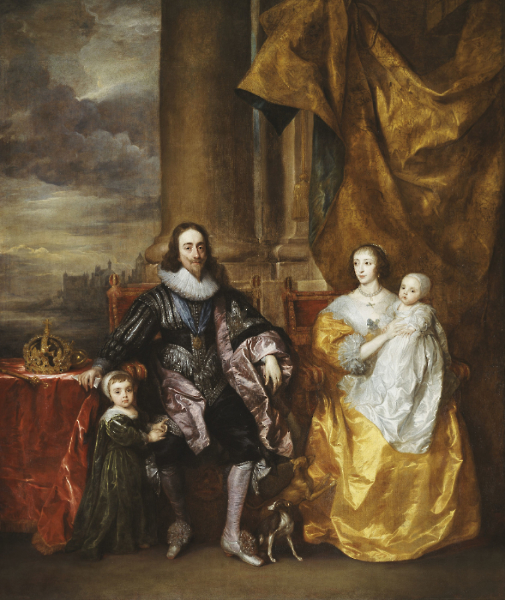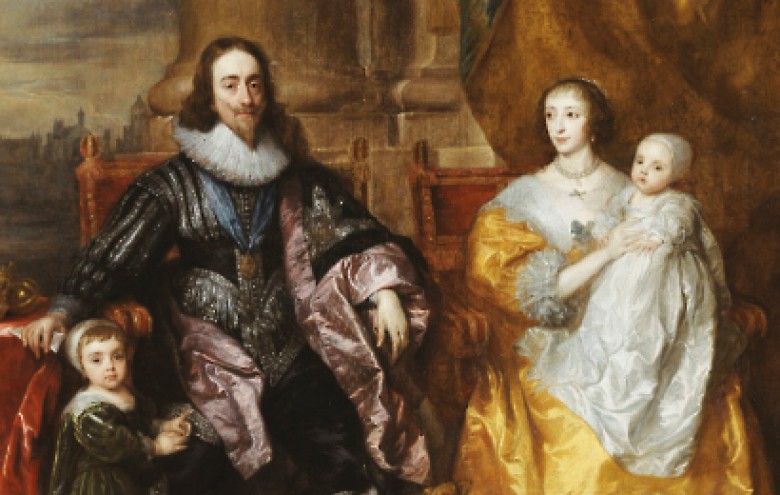2nd February 2019
Charles I was crowned today in 1626. The second son of James I and Anne of Denmark, Charles never expected to become king – that was the destiny of his adored older brother Henry Frederick. However, Henry’s unexpected death from typhoid in 1612 at only eighteen years old was a tragedy not only for his family, but for the whole kingdom, and the eleven year old Charles became heir apparent.
Charles’s father James I died in March 1625, and Charles succeeded to the throne. He married the French princess Henrietta Maria later that year, and expected that they would have a joint coronation. But it was not to be. As a Roman Catholic, Henrietta Maria refused to be crowned by a Protestant bishop and so she could only watch the coronation of her husband from an upstairs window. Henrietta Maria would never be crowned, and she became increasingly unpopular over the course of her husband’s reign.
Charles was the last English monarch to be crowned using the eleventh century Crown Jewels of Edward the Confessor. They were destroyed in the aftermath of the second English Civil War and Charles’s execution in 1649, when the new English Commonwealth dismantled the institution of the monarchy. When his son reclaimed his throne as Charles II in 1660, his coronation was carried out with all newly made Crown Jewels.

Image: Charles I and Henrietta Maria with their two eldest children, Prince Charles and Princess Mary, by Anthony Van Dyck, 1632. Royal Collection Trust / © Her Majesty Queen Elizabeth II 2019
